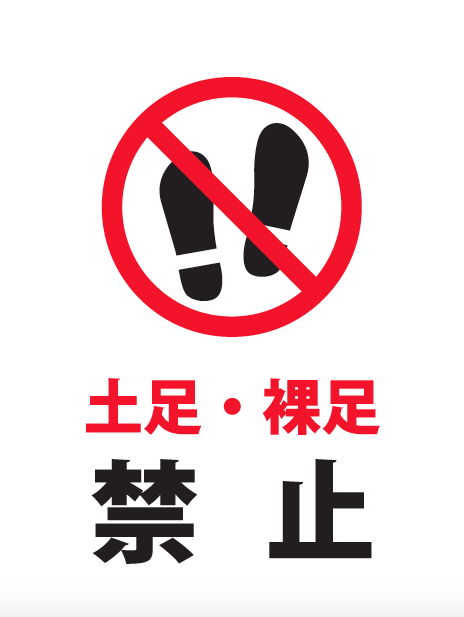Why Do Japanese Take Off Their Shoes?
Shoes Prohibited!
"Dosoku kinshi" (土足禁止) means "shoes prohibited." Although in the West we walk straight into the house wearing our shoes or sandals, in Japan, we leave them at the door. Wherever you are in the world, you can make your home more wafuu by following this easy principle!
*Please note that this article contains affiliate links, which means that your purchasing a product via that link may provide us with a commission. We make it our goal to direct you to products that you will love and that will enhance your wa experience.
Put Your Shoes In the Clogs Box
For Japanese, it’s unimaginable to wear the footwear that you have been tramping around all day in inside the house (much less prop them up on the coffee table!) That's why in Japanese homes, schools, and traditional Japanese-style restaurants, there is a special cupboard for them just inside the “genkan,” (玄関) or the entrance. It's called the “getabako,” (下駄箱), and it literally means "wooden clogs box."
Tip: The getabako at home can get a little smelly. To combat the smell, put used green tea leaves in a pouch made of breathable fabric to act as a natural deodorizier.
Why Do Japanese Take Off Their Shoes?
There are many reasons for the no shoe culture, but here are three you might find particularly interesting.
Home is a Private Space
If you are familiar with the traditional Japanese comedy form called rakugo (落語), you will know that in a lot of these humorous monologues the visitor remains in the entrance of the house, speaking with the owners from the doorway without ever getting inside. That’s because coming all the way inside is a privilege reserved for special guests.
Outside vs. Inside
On top of the fact that home is a very private space, in Japan there is a clearer separation between “outside” and “inside” because of the architecture of the house. In Western homes, the only thing that lies between the outside is a piece of wood or metal, depending on what your door is made of. In a Japanese home, even if you go through the door you are not “inside” yet. You are only standing in the “agari kamachi,” (上がり框) the no man’s land between outside and inside. To really come inside, you have to actually step up a level. That’s why Japanese, “come up to the house,” (家に上がる) rather than “come inside the house.”
Cleanliness
Shinto (神道) is the traditional religion of Japan, and its teachings about cleanliness and purity still pervade the culture. Shinto priests wear a type of shoe called “asagutsu,” (浅沓) but when they enter the front hall of the shrine to perform their rites, they take them off (while facing forward, so as not to turn their backsides toward the deity inside).
Treat Your Guests As VIP
If home for you is a special space, if you want to keep your floors clean, and if you want to treat your guests as VIP, why not make a taking off shoes space? Just like in Japan, you can prepare a pair of comfy slippers for them to wear inside. Make sure the toes are pointing into the house, so that your guest can slip them right on. Before it’s time for them to leave, make sure you have brought out their shoes and turned them to face the door. In true Japanese fashion, why not also send them off with a little something for the road?
Did you know? When trains first started running in Japan, passengers took off their shoes before boarding!
For cozy feet–








Comments
Post a Comment